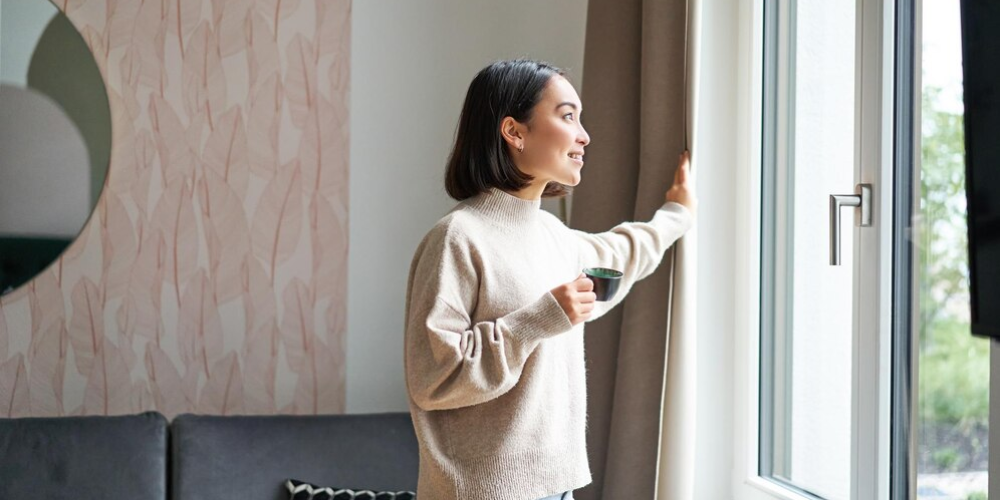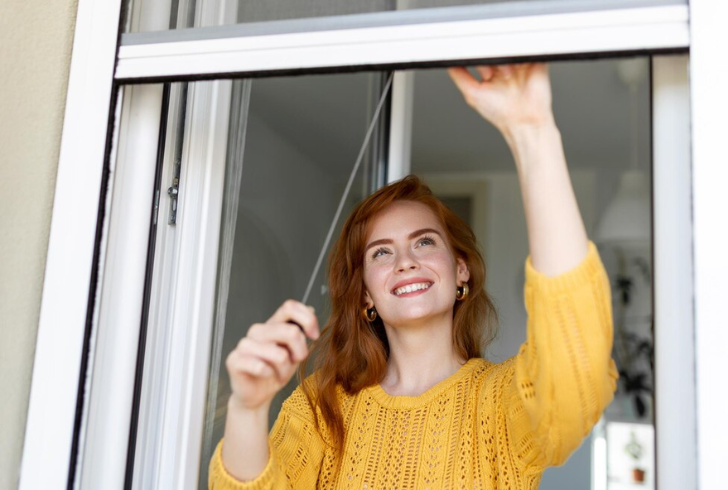
What Is Lüften and Why Should You Do It in Winter?

Proper ventilation is essential for maintaining indoor air quality, especially during colder months. In Germany, a traditional method called lüften has been practiced for generations to keep homes fresh and free from excess moisture. This technique isn’t just about cracking a window open—it’s a structured approach to air exchange that improves air quality, prevents mold, and regulates indoor humidity.
What Is Lüften and How Does It Work?
Lüften is the German practice of ventilating indoor spaces by opening windows fully for short, controlled periods. Unlike leaving a window slightly open all day, lüften ensures a quick and efficient exchange of indoor and outdoor air.
There are two main methods:
1. Stoßlüften (Shock Ventilation)
This involves opening windows in a single room for about 5-15 minutes, allowing a burst of fresh air to replace stagnant air. During colder months, this is done two to three times daily.
2. Querlüften (Cross-Ventilation)
This method enhances airflow by opening windows on opposite sides of a home, creating a draft that quickly replaces indoor air. It became particularly popular during the COVID-19 pandemic as a way to reduce airborne contaminants.
Many Germans follow this practice daily, as it helps maintain healthy indoor air without excessive heat loss.

Freepik | Stoßlüften refreshes rooms with short bursts of fresh air.
How to Lüften Effectively
Proper execution is key to maximizing the benefits of this practice:
1. Open windows fully instead of leaving them slightly ajar.
2. In winter, ventilate for 5-10 minutes; in warmer months, extend to 20-30 minutes.
3. Repeat the process 2-3 times per day, ideally in the morning, midday, and evening.
4. Turn off heating systems during ventilation to avoid unnecessary energy consumption.
5. Avoid opening the front door while ventilating, as it disrupts the airflow pattern and may cause unnecessary heat loss.
The Science-Backed Benefits of Lüften
Indoor air can accumulate pollutants like carbon dioxide (CO2), volatile organic compounds (VOCs), and allergens. Poor ventilation can lead to headaches, dizziness, and respiratory irritation.
Lüften helps to:
1. Reduce indoor air pollutants and allergens.
2. Control humidity levels, minimizing mold and bacterial growth.
3. Improve sleep quality and mental clarity by increasing oxygen levels.
Allen Rathey, a specialist in indoor health, notes that “consistent ventilation plays a crucial role in eliminating airborne contaminants, making indoor environments healthier and more comfortable.”
A Necessary Practice for Modern Living

Freepik | Lüften improves indoor air quality for healthier homes.
German homes are often built with airtight insulation, which makes intentional ventilation essential. Failure to ventilate can lead to excessive condensation, mold growth, and discomfort. Nancy Lundrum, a professor in Germany, shared an example from her own experience: “After four days away from home, I returned to find condensation covering the windows, puddles on the floor, and mold forming. A single round of ventilation cleared the condensation within half an hour.”
This simple yet effective habit is not just a cultural tradition but a necessity for maintaining indoor air quality in energy-efficient homes.
Incorporating Lüften Into Daily Life
As more people recognize the benefits of structured ventilation, incorporating lüften into daily routines can lead to healthier living spaces. Whether during winter or summer, adopting this method ensures fresher air, reduced allergens, and a more comfortable home environment.
By embracing this practice, individuals can maintain better air quality without compromising warmth and energy efficiency—an easy step toward a healthier indoor space.
More inHealthy Trends
-
`
A Look Inside Faith Kipyegon’s Groundbreaking Mile Run in Paris
Last week in Paris, Faith Kipyegon returned to a place she knows well: Stade Sébastien Charléty. But this time, she wasn’t...
July 9, 2025 -
`
Dairy Is Making a Major Comeback — And Health Shoppers Are Loving It
Just a few years ago, dairy sat quietly in the back seat while plant-based alternatives took the spotlight. Now, it’s stepping...
July 4, 2025 -
`
Does Aging Cause Dental Problems?
Aging doesn’t automatically mean losing teeth or developing gum disease. In fact, older adults today are holding onto more of their...
June 25, 2025 -
`
How Upcycled Ingredients Are Shaping the Future of Cosmetics
What used to end up in bins or compost heaps is now finding a new life inside skincare bottles and beauty...
June 18, 2025 -
`
Rock Legend Rod Stewart Trains to Break Sprint Record at 80
Age isn’t slowing Rod Stewart down. Known worldwide for his legendary voice, stadium-filling tours, and timeless hits like “Maggie May”, the...
June 11, 2025 -
`
The Truth Behind Detox Diets – Health Boost or Risky Trend?
It’s hard to scroll through your feed without seeing someone sipping green juice with promises of instant energy, glowing skin, and...
June 3, 2025 -
`
Is Dr. Oz Fit to Lead Medicare?
The announcement of Dr. Mehmet Oz as President-elect Donald Trump’s pick to lead the Centers for Medicare and Medicaid Services (CMS)...
May 29, 2025 -
`
Are Beauty Dupes Worth the Hype?
Beauty fans are no strangers to the world of product swaps. Whether it’s a $10 concealer rivaling a luxury $50 one...
May 21, 2025 -
`
3 Beginner Skipping Workouts for Full-Body Fitness
If you’re on the hunt for an efficient, anywhere workout that torches calories and strengthens your entire body, it’s time to...
May 15, 2025















You must be logged in to post a comment Login